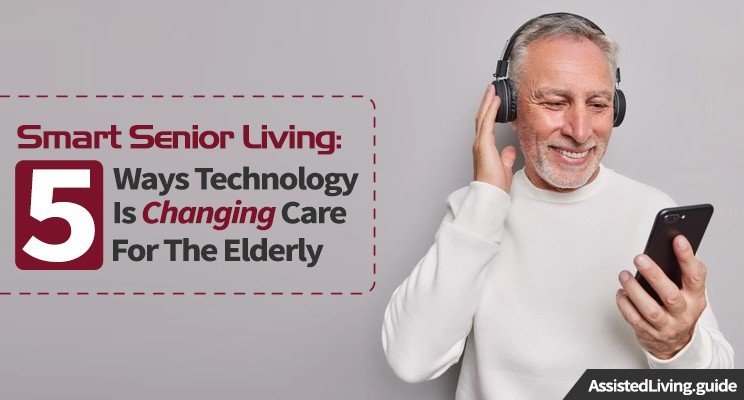Post Preview
Table of Contents:
- Introduction
- Importance of Technology in Senior Living
- Smart Home Devices
- Health and Wellness Tracking
- Safety and Security
- Connecting with Loved Ones
- Case Studies and Real-Life Examples
- Conclusion
Introduction
As the population ages, the need for innovative solutions to support senior living becomes increasingly critical. An encouraging way to improve senior citizens’ quality of life is through the use of technology in senior living facilities. From health monitoring to social connectivity, senior living engagement technology bridges the gap to create safer, healthier, and more engaging living spaces for seniors. With t these innovations, seniors can enjoy a higher degree of independence while staying connected with loved ones. This information is making it possible for seniors to live more comfortably and securely in their own homes or within senior communities.
Importance of Technology in Senior Living
The adoption of technology in senior living is not just a luxury but a necessity. Advanced technology provides older adults with tools to maintain independence, ensure safety, and stay connected with family and friends. According to a report by AARP, nearly 90% of adults over the age of 65 want to stay in their own homes as they age, and technology can make this possible. By leveraging cutting-edge technologies, seniors can benefit from improved medical care, enhanced security measures, and better social interaction, making aging in place not only viable but also enjoyable.
Smart Home Devices
Smart home devices are transforming the way seniors interact with their living spaces. Features like voice-activated assistants, bright lighting, and automated thermostats simplify daily tasks and enhance comfort. Additionally, these devices can be tailored to the needs of seniors, making their homes more accessible and user-friendly. For instance, voice-activated assistants can provide hands-free control over various household tasks. At the same time, smart lights can adjust based on the time of day or activity, ensuring optimal lighting for every situation.
Voice-Activated Assistants
Devices like Amazon’s Alexa and Google Assistant offer hands-free operation, allowing seniors to control home appliances, set reminders, and even make phone calls without lifting a finger. This technology can significantly reduce the effort required for everyday tasks. Imagine a senior being able to turn off the lights or adjust the thermostat simply by speaking a command. This level of convenience not only makes life easier but also enhances safety by minimizing the need to move around the home unnecessarily.
Smart Lighting
Smart lighting systems can be programmed to adjust based on the time of day or activity, providing optimal lighting conditions and improving safety by preventing falls and other accidents. For example, lights can be set to dim gradually in the evening to prepare for sleep or brighten in the morning to aid in waking up. Motion-activated lights in hallways and bathrooms can also help prevent nighttime falls, contributing to a safer living environment for seniors.
Health and Wellness Tracking
Seniors may now more easily keep an eye on their health thanks to advancements in wellness and health monitoring technology. Vital signs, exercise levels, and even sleep patterns may all be monitored using wearables, which can give valuable information to healthcare professionals for improved chronic disease treatment. Furthermore, mobile health apps offer personalized recommendations and reminders for medications and appointments. These technologies can play a pivotal role in early detection and prevention, helping seniors manage their health more effectively.
Wearable Devices
Heart rate monitoring, step counting, and even EKG readings are capabilities that come with wearable technology, such as smartwatches. These tools help seniors maintain a healthy lifestyle by providing real-time health insights and alerts. For instance, a smartwatch can notify the wearer if their heart rate is abnormally high or low, prompting them to seek medical attention if necessary. This continuous health monitoring is especially beneficial for managing conditions like heart disease or diabetes.
Security and Safety
In elderly living, security and safety are of utmost importance. Technology such as fall detection sensors, emergency response systems, and video surveillance can provide peace of mind for seniors and their families. Since falls are the primary cause of injuries among the elderly, fall detection systems are a critical component of a smart home ecosystem, according to CDC research. These technologies can be lifesaving, ensuring that help is always just a button press or an automatic alert away.
Fall Detection Sensors
Advanced fall detection sensors can automatically alert emergency services or designated contacts if a fall is detected. His prompt response can be critical in reducing the severity of injuries. These sensors may be placed at strategic locations throughout the house or incorporated into wearable technology. Once a fall is detected, the system can instantly notify caregivers or emergency responders, ensuring that help arrives quickly.
Emergency Response Systems
These systems often include wearable alerts or stationary devices that allow seniors to quickly summon help in case of an emergency, providing an added layer of security for independent living. Wearable emergency response devices include buttons that, when touched, link the user to a response center. They may be put on as necklaces or bracelets. His immediate access to emergency assistance can significantly improve safety for seniors, particularly those living alone.
Connecting with Loved Ones
For elders, social isolation is a serious worry. Technology, which provides venues for video conversations, social media contact, and virtual events, is essential in closing the social divide. By keeping elders in touch with their loved ones, these digital technologies lessen loneliness and improve mental health. In fact, studies have shown that social interaction can improve mental health and even extend life expectancy.
Video Calls and Social Media
Platforms like Skype, Zoom, and Facebook allow seniors to easily connect with family and friends, participate in virtual gatherings, and share life updates, fostering a sense of community and belonging. Regular video calls help seniors feel more involved in their families’ lives, while social media platforms provide a space for sharing photos, messages, and experiences. These technologies make it possible for seniors to maintain strong relationships, no matter the physical distance.
Case Studies and Real-Life Examples
Evidence of the impact of technology on senior living can be seen through various case studies. For example, a senior living community that implemented a comprehensive technology solution saw a significant reduction in emergency incidents and improved overall resident satisfaction. Another example is the use of health-tracking wearables that enable timely medical interventions, thereby improving health outcomes. These real-world exams show how technology may completely transform senior life.
Conclusion
The future of senior living is undoubtedly intertwined with technological advancements. As these technologies continue to evolve, they promise to offer seniors greater autonomy, safety, and connectivity. Embracing these innovations can lead to a higher quality of life and ensure that aging in place or a senior living community is more sustainable and fulfilling. Smart home appliances, health monitoring systems, and social media integration may help us build senior-friendly surroundings that meet their specific requirements and enable them to lead the best possible lives.




